What is Ornamental fish farming? Owing to the Ornamental fish farming being a relatively new sector, the sector lacks an established market. The ornamental fish are bred for either home or commercial purposes. Commercial purposes are breeding for sale in stores and malls, as well as the internet. Home purposes are breeding for personal enjoyment and amusement. Breeding of ornamental fish can be hard at times because there are not enough breeders or distributors.
Thai ornamental fishes include:
Siamese fighting fish and tail fin clamshells.
Ecuadorian ornamental fish is most famous for snakeheads and many more.
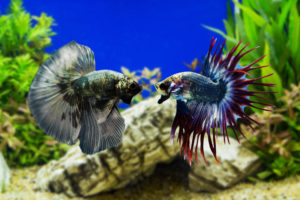
The government of countries around the world imposes strict regulations on ornamental fish breeding because they serve as a growing concern in ornamental fish farming. So there are moments when certain types of fishes introduced to the market, but due to lack of knowledge about their origin, they easily go out of control.
Ornamental fish Breeding And Government Monitoring Around
The government of many countries around the world imposes strict regulations on ornamental fish breeding because they serve as growing concerns in ornamental fish farming. The government is trying to monitor the sector in order to make sure ornamental fish farmers breed ornamental fishes sustainably, which means breeding ornamental fishes without harming the environment. When ornamental fisheries are not bred sustainably they can cause damage to marine life and also pose a risk of introducing diseases into wild populations, which can, in turn, cause problems for ornamental fish farmers.
Ornamental Fishes as a “Lucrative” business
The sector is being considered by people who are involved in the sector as a “lucrative” business. There are risks associated with breeding ornamental fish, like diseases and market risk. However, there are big rewards to be reaped if done successfully. For instance, if you were to breed red devil cichlids (commonly found in pet shops, which can grow up to 12 inches), within a few months of breeding them successfully, you will harvest some 2.000-3.000 fishes for sale.
Even if you were to sell each fish at $15 per piece (which would be considered cheap) then that is $30.000-45.000 dollars, minus costs such as water, electricity, fish food and so on. This is just one example of how big the rewards can be in ornamental fish farming.
Ornamental Fish Trade And The World
Fish ornamental trade is one of the ornamental animal trading markets in the country. There are different types ornamental fish that abound in this industry. The ornamental fish come from various countries, such as Colombia, Ecuador and Thailand. Colombian ornamental fishes include: discus fry and goldfish, to name a few. Thai ornamental fishes include: Siamese fighting fish and tail fin clamshells, to name a few.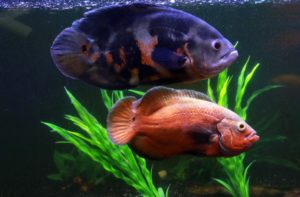
Ecuador ornamental fishes include: ornamental catfish and ornamental guppies, to name a few. Ornamental fish mainly comes in colors that are bright or their natural color. There is no harm in keeping ornamental fish as pets. Pet shops and aquariums sell the fishes.
Ornamental Fish Culture Propagation And Rearing
Ornamental fish culture is a term referring to the breeding and rearing of ornamental fish for display. Ornamental fish refers to those water-breathing animals found from fresh water to salt water, having been domesticated or not, which are considered interesting or attractive due to their size, shape, color, pattern, behavior, fleshy texture, etc.
Fish culture practices vary widely depending on the species being cultured, their geographical location and target markets.
The first group of ornamental fish were kept by ancient civilizations in China, Egypt, and Mesopotamia. The Chinese were perhaps the most advanced in their approach to fishkeeping. They developed sophisticated (and successful) aquaculture systems for several kinds of aquatic animals, including ornamental fish, about 4,000 years ago.
The history of keeping ornamental fish in Japan goes back many centuries in which they would breed carp in outdoor ponds and were kept by Buddhist temples.
Breeding and Rearing unit
There is a breeding and rearing unit at the University of Georgia. The breeding and rearing unit has been breeding and rearing different species of fish for research purposes since 1949. The breeding and rearing unit has raised two thousand fishes since 1949. The breeding and rearing unit provides freshwater, saltwater, and various sorts of marine fish.
The breeding and rearing unit not only is breeding for the University of Georgia but is breeding for other universities as well as aquariums. The breeding and rearing unit has an extensive breeding program for species of fish that are breeding in the wild.
Ornamental fish Farming and Endangered species
Ornamental fish farming is responsible for breeding endangered species that could not be found in the wild anymore, because humans have destroyed their natural habitats. The breeding program helps the endangered species to reproduce faster than they would naturally.
The breeding program at the breeding and rearing unit has produced thousands of fish each year. The breeding program is breeding and breeding different species of fish to see which species thrive better in captivity than they do in the wild.
Commercially Important Indigenous Species
The commercially important indigenous species of fish breeding and rearing unit include Tilapia, Blue Tilapia, Rohu, Catfish, White Bass, Silver Bass.
The breeding and rearing unit is a closed recirculating system, fills the breeding basins with well-oxygenated water from the aquaculture pond. Then makes up for evaporation loss by adding fresh well-oxygenated water from the aquaculture pond as needed. The breeding unit has breeding racks made of either concrete or metal.
The breeding technique for breeding and rearing unit is mass breeding in which brood fish such as rohu, silver carp, and catla are captured from the wild and stocked at very high densities (50/m2). The breeding and rearing unit has a low mortality rate during breeding and rearing because of the breeding technique applied. One breeding strategy is to breed rohu, silver carp, catla at a smaller size (30-35 g) and release fry fish into the breeding ponds.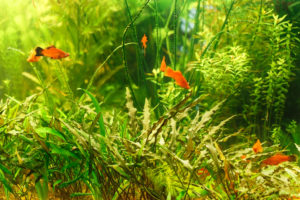
Ornamental fish industry
In the ornamental fish industry, breeding and rearing units are used to produce ornamental fish.
# Breeding units grow a culture of breeding stock for breeding purposes.
# Rearing units are where breeding stock is grown to marketable size and then harvested.
Since breeding units grow a culture of breeding stock, which can be used as a source of breeding quality offspring, it is crucial to control the health and purity of this culture. This includes taking care in managing the purity and health of the water for breeding purposes as well as providing the best feed possible for optimal growth rates.
In addition, breeding units need to take proper steps for preventing too much algae growth as well as controlling temperature and humidity levels to create an optimal breeding environment.
As breeding units produce breeding stock, the proper breeding techniques needs to be applied. For example, one breeding technique is mass breeding which stocks breeding adults at an extremely high densities (50/m2) and this breeding technique works well for silver carp.
Breeding unit
The breeding unit is one of the most successful units in the Philippines with over 200 species being cultured. The facility itself contains many different sections, but will be mainly discussed as two sections, which are the original section and the new rearing facilities.
The Division Of Facility For Breeding Purposes
The original facility was divided into three main areas that were used for breeding purposes. These three areas are for spawning, growing them until they reached a certain size where they are then moved to the second area for further growing. The first area is where fish breeders live, which would be better described as housing for the workers who are housed there. The second part of the original facility is where fish grow until they reach a certain size, which can be anywhere from 20 to 30 cm in length. The last area is where large amounts of small fishes are kept that have yet to breed or have just finished breeding. They are held in this area until they grow to a certain size where they will then be moved into the second part of the facility.
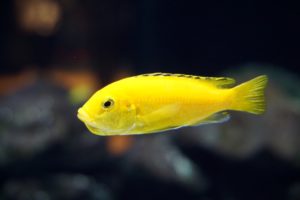
The newly built rearing facility is divided into four areas that include breeding, holding and growing the ornamental fish until it reaches a larger size, treating them if needed and finally releasing them back into their natural habitat. The first area is where breeding takes place, which will be discussed in detail later on. The second area is housing for breeding workers and holding ornamental fish until they grow to a certain size where they are then moved into the third part of the facility, which is growing ornamental fish.
Ornamental fish production
Ornamental fish production is just one of the many fish breeding projects that are currently in operation.
These projects are breeding ornamental fishes for sale to aquariums and other means of breeding fish just like it. The breeding project includes breeding these type of ornamental fishes, which includes breeding it for the purposes of selling them to different institutions. This breeding process is done for breeding purposes only, which is why people take so much time with it to ensure it becomes successful.
The market for breeding ornamental fishes is huge because there are so many institutions around the world that breed these types of fishes and sell them. Ornamental fish production is a very profitable business because breeding these types of fishes can be expensive from a capital perspective. To ensure breeding ornamental fish is done properly, breeding units or breeding sites need to be prepared and able to accommodate this type of breeding.
Indigenous ornamental fishes
Fishes are considered one of the major groups in fisheries. They are also one of the most popular types of fish breeding and rearing units, with over 600 species being cultured at present. The breeding and rearing unit for ornamental fishes that is discussed in this paper has successfully cultured over 200 species of ornamental fishes that are found in the Philippines.
The breeding and rearing unit is successful because it complies with all the rules and regulations set by the Bureau of Fisheries and Aquatic Resources (BFAR) Manila. These rules and regulations in breeding and rearing ornamental fish species are what this paper will discuss.
Egg Lying Fish
Egg layers are animals that produce eggshells. They are able to do this because they have a peculiar egg-tooth. The egg is kept safe in the egg-shell until it hatches.
The egg-layers are mainly found in the water, on land, or in trees. Some egg layers lay eggs on the ground, or on leaves of plants. There are egg layers that have their eggs in the water. The egg-layers all have a common characteristic, they lay eggs with tough eggshells.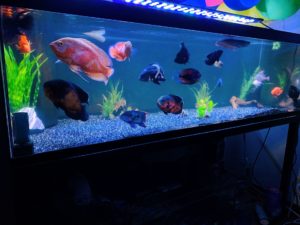
Breeding during spawning season
When it comes time for breeding, workers gather all needed equipment and then prepare their respective areas where spawning takes place. After everything is set up, then the female fish are introduced into the water so they can be fertilized. After breeding is done, workers collect all healthy eggs to be placed in hatching baskets. All fertilized eggs are then placed into hatching baskets where it will take anywhere from two to three days until the eggs are hatched.
Breeding during off-season
When it’s not spawning season, workers produce fertilized eggs in their own rearing tanks. When spawning is not taking place, the fish are kept in a separate area where they receive a more natural type of feeding. The fish will be fed once or twice a day, but only small amounts of food so that they remain hungry and continue to search for food on their own. This allows the fish to become more active and begin hunting for food. By keeping the fish hungry it will also help them breed more often as they remain on constant look-out for food.

